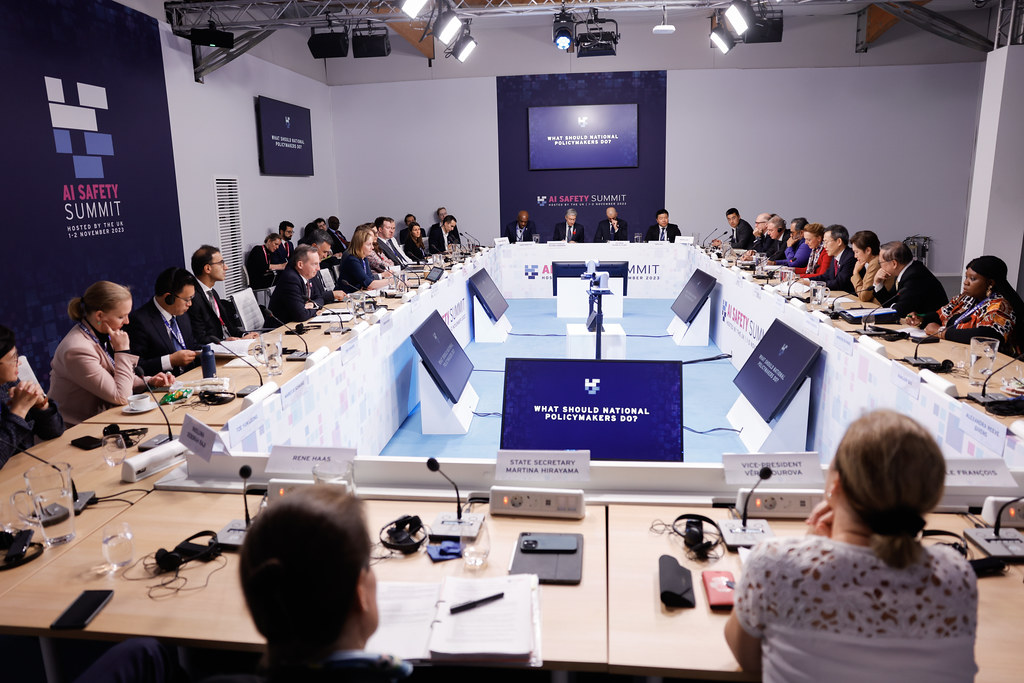The Flawed Human Rights Watch Report on Gaza
Human Rights Watch (HRW) recently released a report accusing both Hamas and the Israeli government of committing war crimes regarding an incident in May 2019. During these hostilities, the Israeli Defense Forces (IDF) struck 350 Hamas and Palestinian Islamic Jihad targets in Gaza after those groups launched roughly 690 rocket attacks into Israel. HRW’s report claims that both sides unlawfully attacked civilians during the hostilities.

Published by The Lawfare Institute
in Cooperation With

Human Rights Watch (HRW) recently released a report accusing both Hamas and the Israeli government of committing war crimes regarding an incident in May 2019. During these hostilities, the Israeli Defense Forces (IDF) struck 350 Hamas and Palestinian Islamic Jihad targets in Gaza after those groups launched roughly 690 rocket attacks into Israel. HRW’s report claims that both sides unlawfully attacked civilians during the hostilities. While loss of life on all sides of this endless conflict is tragic, the HRW conclusions related to IDF attacks are legally flawed by an “effects-based” methodology. By treating the unfortunate effects of attacks as definitively indicating the claimed unlawfulness of such attacks, human rights groups like HRW reinforce the practice of judging compliance with the law of armed conflict (LOAC) by pure numbers: whether armed attacks killed or injured “too many” civilians.
This tendency by human rights groups to invoke war crimes based on the effects of hostilities, and to conclude that “too many” civilians were killed in a particular attack, is all too common. This frequently used approach to assessing compliance with the international law that regulates the conduct of armed hostilities undermines the legitimacy of states’ military operations. It also produces the perverse effect of incentivizing terrorist groups, such as Hamas and the Islamic State, to illegally shield their military operations with civilians. These groups exploit the resultant deaths caused by lawful strikes by professional armed forces such as the U.S. military and the IDF. Indeed, civilians are the weapons de jure used by terrorist groups, and HRW fails to recognize this crucial fact.
According to the HRW report, both Israeli and Palestinian forces failed to take appropriate measures to avoid war crimes during the hostilities in May 2019. The report also alleges a failure by both parties to properly investigate incidents involving death and injury to civilians. The HRW investigation concluded that Israel launched several attacks in Rafah and Beit Lahiyah on May 4 and 5 that employed “indiscriminate or disproportionate” force, pointing to the number of civilians tallied by HRW as killed in these attacks. Furthermore, HRW claims that it “found no evidence of a military objective” for Israel’s strikes on the Zoroub commercial building in Rafah or the shipping container in Beit Lahiya, alleging instead that Israel deliberately attacked civilians and civilian objects.
The report also condemns Palestinian militants for their “inherently indiscriminate” attacks that failed to “distinguish between civilians and military targets.” These attacks landed in Israel and Gaza, killing both Israeli and Palestinian civilians.
HRW is certainly correct to emphasize the legal prohibition against launching an indiscriminate attack, and we share their condemnation of any attack that violates the LOAC. But we do not believe they have made a case for a credible comparison between the conduct of these two parties to the conflict. When Palestinian militants launched missile, rocket and mortar attacks into Israel with no plausible indication the attacks were directed at lawful military objectives, their attacks were not merely “indiscriminate.” They indicated a deliberate attack directed at civilians in violation of the principle of distinction, undoubtedly the most egregious violation of the LOAC’s targeting rules. Nothing suggests these attacks were directed at military objectives. Nor is there any plausible basis to support a claim of reasonable mistake, as the IDF, unlike its opponents, simply does not utilize civilian communities or buildings in support of its military operations, nor does it exploit the presence of civilians to shield its military assets.
In contrast, the HRW condemnation of IDF attacks seems far more speculative. First, the conclusion that several targets did not qualify as military objectives belies the multifaceted and often time-sensitive totality assessment related to this determination. In a complex operational environment in which an opponent routinely utilizes civilian buildings and objects in support of its military operations, it is speculative at best, if not impossible, to reach this type of categorical conclusion without a comprehensive review of IDF intelligence available at the time of the attack decision. In short, unlike the civilian communities attacked by Palestinian militants, it is plausible if not likely that the IDF reasonably assessed their targets as military objectives based on the information available at the time of the attack decisions. The fact that HRW reaches a different conclusion in a post hoc assessment based on incomplete information simply does not indicate that such an effects-based assessment is accurate.
It seems, however, that because HRW does not know what the assessed military advantage was in the absence of the IDF intelligence that led to the attack decisions, and because the organization does know how many civilian casualties resulted, the report reaches a conclusion of illegality. This is a distortion of the complex ex ante attack decision-making process the LOAC demands of commanders and others who decide on an attack. Ultimately the HRW report’s conclusions fail to appreciate this legal facet of the targeting analysis. It is difficult and indeed sometimes impossible to fairly judge the legality of attacks such as those in Gaza, as HRW purports to do, without factoring in information related to the nature of nominated targets and the risk to civilians and civilian property IDF decision-makers possessed at the time.
Furthermore, while deliberately attacking civilians is about as obvious a LOAC violation as can be imagined, it is far more complex to assess what qualifies as a lawful military objective, the weight accorded to that objective, or when the incidental effects of an attack directed at a valid military objective are excessive and therefore unlawful. The unfortunate incidental consequences of an attack directed against a lawful military objective will credibly support a claim of illegality only if those consequences were expected to be excessive in relation to the anticipated military advantage from striking the intended military objective.
Such accusations must account for the fact that numbers of incidental civilian casualties, while probative of legal compliance, are never dispositive. This is because the law imposes an ex ante standard on those who conduct such attacks: They are bound to make reasonable judgments based on the information available at the time of the attack decision. For example, those planning and conducting a particular attack must determine that the anticipated deaths or injuries to civilians, and destruction of civilian property, may not be excessive compared to the “concrete and direct” anticipated military advantage.
Yet while the HRW report uses the language of ex ante analysis, the report’s findings reflect an undeniable emphasis on post hoc outcomes to condemn the IDF’s attack decisions. Even as HRW seeks to consider all relevant ex ante circumstances, any analysis of how the IDF understood the “anticipated military advantage” side of the attack legality equation is only speculation: HRW didn’t, and doesn’t, possess the facts known to the IDF at the time of the strike decision.
A credible assessment of military advantage in relation to compliance with the proportionality obligation is not the only legal concept that the HRW report fails to analyze appropriately. The LOAC demands a complex series of decisions from a commander deciding on an attack. First, it requires compliance with the distinction obligation. This obligation prohibits the deliberate attack against any person, place or thing that does not qualify as a lawful object of attack within the meaning of the law. This rule does not prohibit conducting attacks against anything that may, prior to the conflict, have been “civilian” in nature. Virtually any place or thing can be converted into a lawful “military objective.” In the context of urban warfare, this conversion often results from enemy use of the formerly civilian place or thing to advance the enemy’s military goals. Indeed, even civilians themselves may, in certain circumstances, forfeit their presumptive protection from deliberate attack: specifically, “for such time” as they take a direct part in hostilities. Accordingly, what will often appear in hindsight to have been a deliberate attack on a civilian building will in fact have been an attack on a building the commander or other military decision-maker reasonably assessed as a military objective because of the way it was being used by the enemy, at the time the commander was making the decision. The law requires that the reasonableness of this decision, and hence its legality, is to be determined by what the decision-maker knew or should have known at the time of the decision—not what outside observers speculated months later.
Second, the law demands that the attacking commander do whatever is operationally feasible to mitigate the risk to civilians prior to launching an attack expected to put them at risk. There is extensive, publicly available information on the efforts Israeli commanders take and have taken to comply with this obligation, including everything from dropping leaflets to sending Gaza residents text messages warning of impending attacks. Indeed, the IDF is far more transparent with these decisions than other professional armed forces. During the several fact-finding missions in Israel in which we have both participated, the common reaction from attending retired senior U.S. generals and admirals has been concern that the bar is being set unrealistically high by the IDF’s comprehensive warning and precautions efforts.
The HRW report refers to warnings only twice, and both times it points to attacks where civilians said they did not receive any warning. In failing to acknowledge the long IDF practice of providing extensive warnings and their other efforts to implement feasible attack precautions to mitigate the risk to civilians resulting from their attacks, the report ignores one of the most important indicators of good-faith efforts to mitigate civilian risk. It also distorts the nature of the warning obligation with the not-so-subtle implication that the IDF breached this obligation in the two instances in which civilians indicated they were not warned. But like other aspects of the report, this discussion failed to consider why the IDF chose not to issue pre-attack warnings in these instances (assuming this to be true) and failed to appreciate when warnings are actually required by the LOAC.
The law requires such pre-attack warnings as a civilian risk mitigation measure, but only when circumstances permit, meaning when feasible. Feasibility—judged from the ex ante perspective of the commander planning the operation—hinges on operational considerations such as loss of surprise or increased risk to attacking forces. By omitting any discussion of the qualifier to this warning obligation, the HRW report paints a distorted picture of compliance with the governing law. Even if no such warning was issued prior to the two particular attacks described in the report in which interviewees claimed not to have been warned that fact does not itself indicate a violation of the precautions obligation that incorporates warnings. Without considering why no such warning was issued, it is legally impossible to credibly assess that alleged omission.
Finally, as mentioned above, the LOAC’s fundamental attack legality equation prohibits any attack, even one directed against a lawful target, when the commander assesses that the anticipated injury to civilians and/or destruction of civilian property will be excessive compared to the anticipated concrete and direct military advantage. This is the so-called proportionality rule (although it is important to recognize that it is the word “excessive” and not “proportional” that is the touchstone of compliance with this rule). This proportionality obligation is the one most susceptible to misunderstanding and is the one most commonly invoked to engage in post hoc effects-based condemnations. The HRW report is no exception, devoting a substantial portion of the text to explaining why the civilian casualties documented by HRW indicate a violation of the proportionality obligation.
Focusing so heavily on outcomes creates a real risk of analytical and legal distortion. To this end, any proportionality-based condemnation implicitly acknowledges that the attack was directed at a lawful military objective and that the civilian harm was not the intended outcome—because if this were not the case, the question of proportionality would not have been raised in the first place. Instead, such condemnation presupposes this injury was an incidental consequence of that attack. In short, the LOAC’s proportionality rule is triggered only after a target is determined to be a valid military objective and the commander assesses that attacking that target will place civilians and/or civilian property at risk. HRW is certainly correct that, in such situations, commanders are expected to assess the risk of such consequences as best they can, and then decide whether that risk necessitates foregoing the attack on the target, whether as a matter of law or even when not legally required as a matter of policy. But this means it is essential to know the value accorded to that target at the time of the attack decision when assessing compliance with the rule.
Without information related to the anticipated value of the target, the attack and the civilian risk, it is impossible to assess whether the civilian casualty outcome violated this obligation. And characterizing the alleged violation as a war crime, as HRW does regarding Israel’s conduct, is even more difficult to justify based on civilian “casualty counts.” A proportionality violation qualifies as a war crime—at least within the jurisdiction of the International Criminal Court—only if it can be established that the anticipated civilian risk should have been determined by the attacking commander as “clearly excessive” at the time he or she made the attack decision. To suggest it is possible to infer an excessive effect assessment without knowing why the commander launched the attack is misleading; to infer it is possible to conclude that the commander should have assessed the civilian risk as clearly excessive at the time of the attack decision without knowing why he or she ordered the attack is absurd, and it undermines the credibility of the entire HRW report.
None of this is to say that attack effects are irrelevant to the assessment of legal compliance in war. On the contrary, such effects are an important element in what must be a totality-of-the-circumstances analysis in the effort to re-create the ex ante decision-making process. It will often be difficult to reach credible conclusions on compliance when information related to the attack decisions is not publicly available. But this difficulty does not justify adopting a distorted and misleading analytical approach in the effort to reach legal conclusions.
Decisions to employ force during the conduct of hostilities—especially when engaging an enemy that embeds assets among the civilian population and makes virtually no effort to distinguish those assets from civilians and civilian property—are complex, often time-sensitive, based on imperfect information and rarely amenable to re-creation. These realities require that those who critique military operations accept that in many situations insufficient information will be available to reach solid conclusions. In such situations, it is certainly credible to cite unfortunate attack effects as raising questions about legal compliance or, perhaps, to emphasize such effects in order to press for further inquiry or greater transparency as to why an attack was carried out. But HRW cannot substitute “we don’t know” for that component of the equation.
HRW’s effects-based methodology is counterproductive to the organization’s claimed goal—that of enhancing civilian protection during hostilities. It incentivizes the worst practices of armed groups like Hamas by reinforcing their expectation that increasing civilian exposure to the risks of hostilities—for example, by exploiting the presence of civilians to shield their assets—will produce a net gain in their strategic delegitimization campaign. It also penalizes commanders who engage in good-faith efforts to comply with the law by implying that their obligation is not to make reasonable attack judgments but, rather, that those judgments must always produce the “right” outcome. Ultimately, this flawed methodology for assessing legality is contrary to both the spirit of the law and the interests of the victims of war whom the law is intended to protect.
Geoffrey Corn, Lt. Col. (ret.), is the Vinson & Elkins Professor of Law at South Texas College of Law Houston and a distinguished fellow at the Jewish Institute for National Security of America (JINSA)'s Gemunder Center for Defense & Strategy. Rachel E. VanLandingham, Lt Col. (ret.), is a professor of law at the Southwestern Law School in Los Angeles, California, and a former judge advocate in the U.S. Air Force. Both are members of JINSA’s Hybrid Warfare Taskforce.



.jpg?sfvrsn=f557f72a_4)

